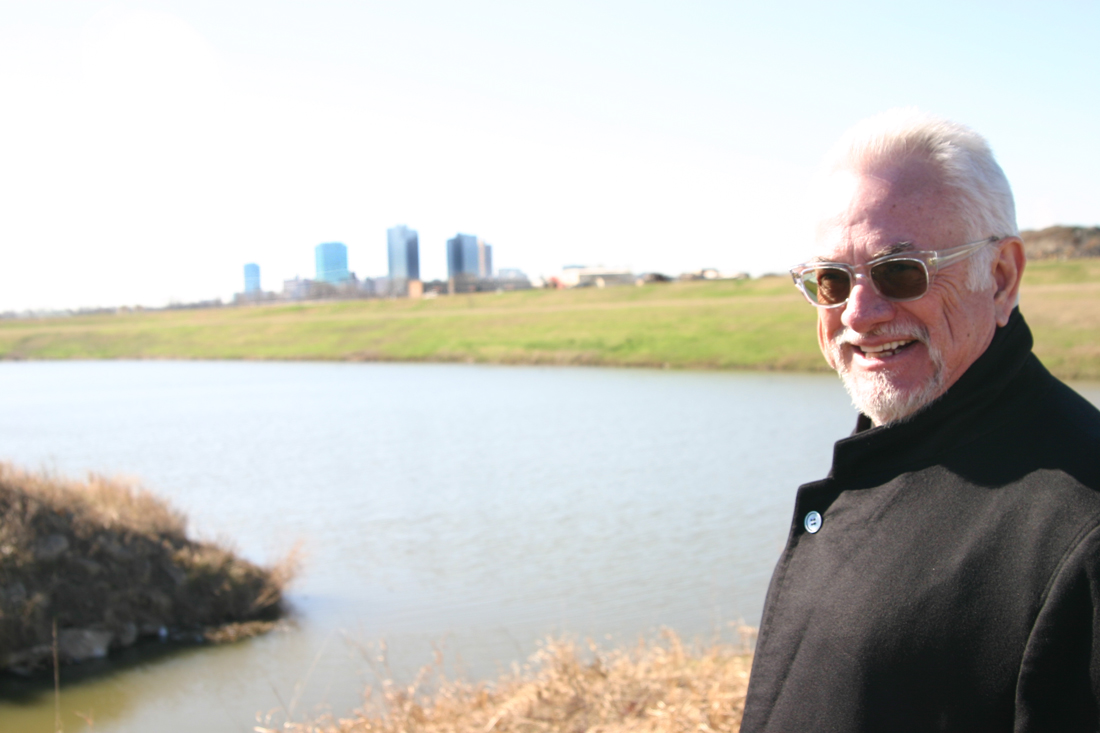The Near East Side’s Oakhurst neighborhood sprang up in the 1920s as an early Fort Worth suburb — I-35 hadn’t been built yet, and the Trinity River served as a natural buffer from bustling downtown. Residents still enjoy Oakhurst’s relative quietness, towering trees, gently rolling hills, and scenic bluff, as well as its close proximity to the city’s center.
These days, however, the freeway has moved closer than ever to the homes, with more expansion planned in the future. Meanwhile, motorists trying to avoid I-35’s seemingly constant congestion are cutting through Oakhurst on their way to Beach and Belknap streets and Texas 121.
Now a developer is eyeing the southwest corner of I-35 and Northside Drive, with visions of a five-story luxury apartment with up to 500 units.
Just east of the neighborhood are Oakhurst Elementary School, Riverside Middle School, and Carter Riverside High School, each attracting hundreds of motorists on weekdays as parents drop off and pick up children. The idea of adding 500 new tenants and their vehicles to the mix has some Oakhurst residents fretting.
“We have a lot of cut-through traffic,” said Oakhurst Neighborhood Association President Ginger Bason. “We have a lot more traffic issues over here than people are aware of.”
Over the years, residents have convinced the city to install speed bumps near the elementary school and stop signs to slow down cars. Calvary Cathedral International hires people to direct traffic on Sunday mornings because of the large number of motorists entering the neighborhood.
Anyone who uses Northside Drive to get to I-35 knows the planned location for the apartments: It’s that large grassy field just across the street from Mercado Juarez Café and the Country Inn & Suites. The vacant acreage fronts the river and offers great views of downtown.
“We’d love for it to just stay greenspace because we have so little of that anymore, but money plays a big role in those kinds of things,” Bason said.
Most of the 14-acre tract is privately owned and zoned for general commercial development. Two acres, however, are owned by Tarrant Regional Water District and are part of the floodway system.
“If they get everything approved and pay for the extension of the drainage into the river, we have tentatively agreed to lease our property for parking,” water district spokesman Chad Lorance said.
The proposed development will sit just east of the Trinity River Vision’s Trinity Uptown project, which includes an urban waterfront with a town lake, boardwalk, outdoor dining, and water activities.
The 14 acres have long been destined for development. But the land sits in a floodplain, and that can boost construction costs. Fort Worth architect Ken Schaumburg has received kudos for his townhouse designs such as downtown’s luxury condo complex Le Bijou. But he’s also been accused of crying wolf in the past by announcing plans for projects that never came to fruition.
His latest project will go belly-up as well, unless city officials approve a zoning change. And winning over city officials is easier when critics aren’t showing up at city hall and demanding protection.
“We’re not against the project, but there are some legitimate questions that need to be answered,” said one neighbor who asked not to be identified.
The No. 1 question regards traffic cutting through Oakhurst.
“Five hundred apartments means a minimum of 500 more cars on the road,” Bason said. “We’re concerned about how it will impact our neighborhood to have an apartment complex on the other side of the freeway.”
Developers will meet with neighbors this week to pitch the plan and address concerns.
They’ll probably get an earful — Oakhurst residents are an active and vocal bunch. In recent years, they’ve battled gas drillers, resisted I-35 encroachment, and fought to protect their scenic bluff. Longtime resident Libby Willis is president of the Fort Worth League of Neighborhoods, which advocates for neighborhoods citywide.
Schaumburg is prepared with architectural drawings, a traffic study, and various other pieces of evidence to alleviate fears. The $1 billion commercial development and flood-control project known as Trinity River Vision isn’t exactly a fast-moving train these days, but it’s inching forward. In time, an estimated 10,000 new housing units and 3 million square feet of commercial space are expected to be built near Trinity Uptown, which will extend downtown to the north and help to connect it with the Stockyards.
Schaumburg’s plans call for 300 apartment in the first phase, with another 200 coming along later. They’ll be built of brick, stucco, hardwoods, and concrete, with granite countertops and stainless steel appliances. Residents will have access to a gym, club, theater, marina, and a resort-style pool. Most units will offer unobstructed views of the river and skyline.
“There are very few places in Fort Worth where you can actually live on the water,” he said. “It has to be high end to support the cost. The land is expensive, and to be able to build on the water is more expensive.”
Schaumburg doesn’t believe the apartments will add much to the neighborhood’s traffic woes. The apartments are geared toward upscale singles seeking the urban dream.
“There is a national trend toward multifamily living with more vibrant lifestyles so people are not stuck in suburbia,” he said.
The recession uprooted many people from their homes and made it more difficult to get mortgage loans after 2007. A new generation of consumers has soured somewhat on buying homes. U.S. Census surveys show that 69 percent of households owned their homes in 2005, but that number dropped to 67.2 percent in 2009 and 66.5 percent in 2010.
Easy access to freeways and close proximity to Sundance Square, the West 7th Street entertainment strip, the Stockyards, and countless restaurants and clubs are expected to attract potential tenants — but few with children, Schaumburg said.
“Typically the demographics of high-end apartments include very few kids,” he said. “We don’t even have a playground. There will be a lot of singles and couples. It should have little or no impact on the school district.”
With few tenants wading into Yucca Avenue traffic to take children to school, the impact on neighborhood traffic will be negligible, he said.
Another worry for Oakhurst residents is whether the apartments will originate as luxury lofts, only to be sold and resold over the years until they become slummy. Schaumburg said the high costs of construction and the expensive rent prices should keep the apartments well maintained for years to come.
“The rents will be among the highest in town,” he said.
Developers will meet with neighbors at 7 p.m. on Feb. 7, at Calvary Cathedral International, 1701 Oakhurst Scenic Dr. The Planning & Zoning Commission is expected to consider Schaumburg’s request for a zoning change on Feb. 13. Then it will go to the city council for a vote.












